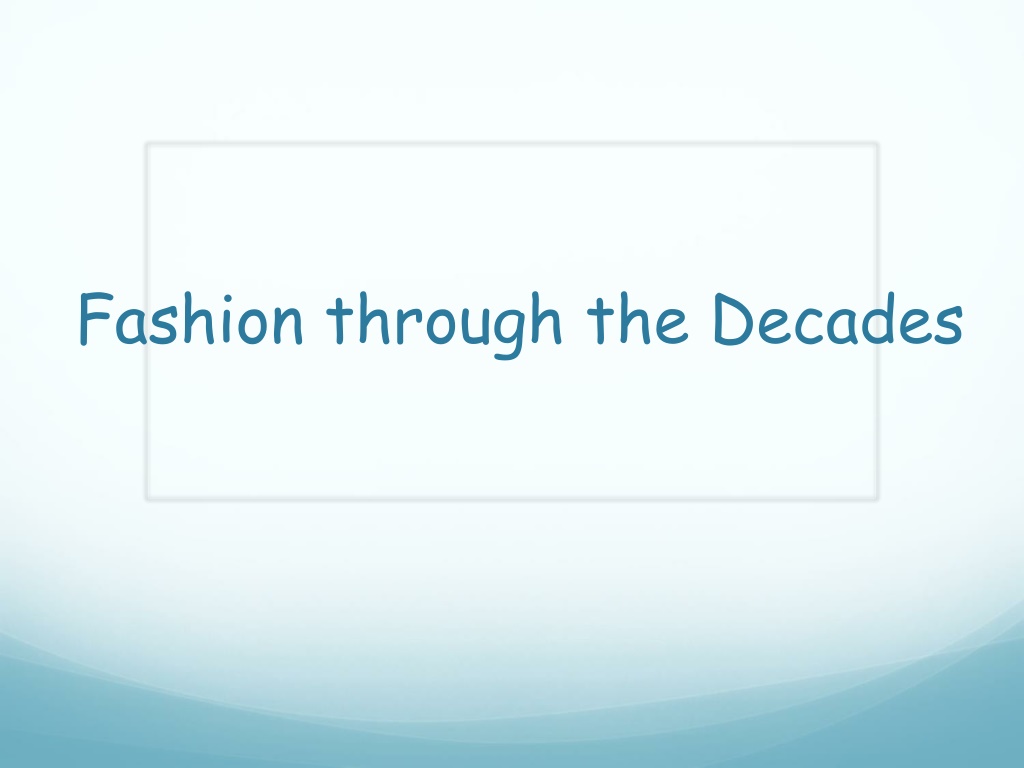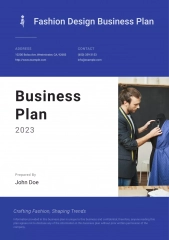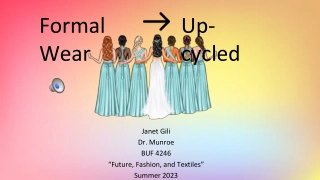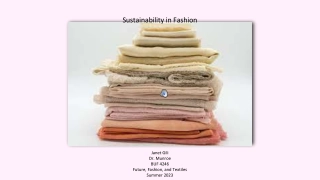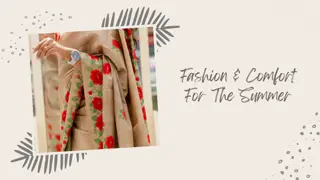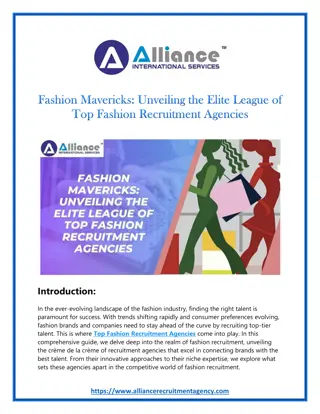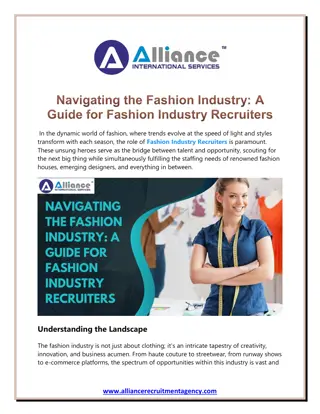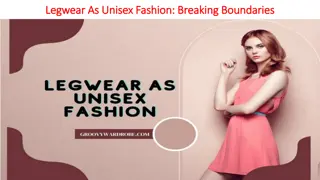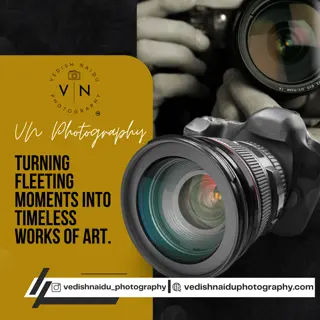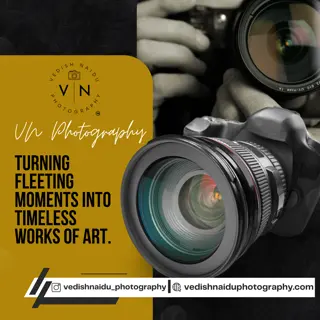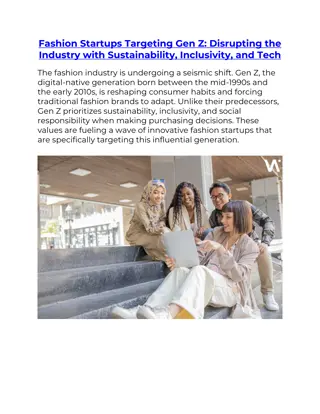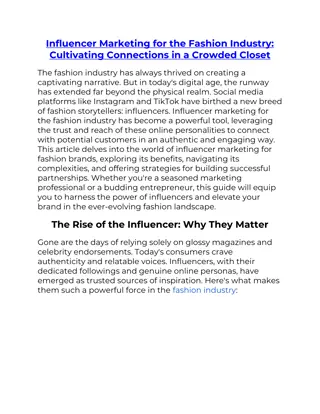Evolution of Fashion: Decades Unfolded
Explore the ever-changing world of fashion through the decades, from the Edwardian era's corsets and silhouettes to the free-spirited Roaring 20s, the elegant 1930s bias-cut dresses, and the practical yet stylish 1940s wartime fashion. Witness the evolution of trends and styles that shaped fashion history.
Download Presentation

Please find below an Image/Link to download the presentation.
The content on the website is provided AS IS for your information and personal use only. It may not be sold, licensed, or shared on other websites without obtaining consent from the author.If you encounter any issues during the download, it is possible that the publisher has removed the file from their server.
You are allowed to download the files provided on this website for personal or commercial use, subject to the condition that they are used lawfully. All files are the property of their respective owners.
The content on the website is provided AS IS for your information and personal use only. It may not be sold, licensed, or shared on other websites without obtaining consent from the author.
E N D
Presentation Transcript
Research Task Read through the power point slides and make notes
BIG QUESTION What Decade am I ? Key Words Decade History Edwardian
Edwardian 1890 - 1914 The fashionable hour glass silhouette belonged to the mature woman of ample curves and full bosom. The S-bend health corset set the line for fashion conscious women until 1905. The corset was too tightly laced at the waist and so forced the hips back and the drooping monobosom was thrust forward in a pouter pigeon effect creating an S shape
Paul Poiret The term 'hobble skirt' came into popular use in the early 1910s, when a European fashion trend started by French designer Paul Poiret introduced long skirts that were narrow at the hem, thus 'hobbling' the wearer.
Roaring 20s Dipping, scalloped and handkerchief hemlines in floating fabrics. It was only in 1925 that skirts rose 14 to 16 inches (45 to 50 cm) from the ground making the shorter hemline we associate with the era. Female clothes became looser and more shapeless in fit. The bust was suppressed, the waist disappeared, the shoulders became broader and hair shorter and shorter. Narrow boyish hips were preferred. The silhouette emphasised a flattened chest and womanly curves were eliminated as the line became more simplified.
Madeleine Vionnet, 1930s In the 1930s, the ideal of slimness remained but the silhouette regained some curve. Evening dresses during this period were made of clinging bias-cut fabrics that expressed the body underneath with every motion
Rationing, 1940s Fashion items that became popular were the wedge sole shoe, the turban, the siren suit and the kangaroo cloak. The turban equalised people of all sorts. It began as a simple safety device to prevent the wearer's hair entangling in factory machinery. It doubled as a disguise for unkempt hair which women had less time to attend to being so busy running homes, jobs and giving extra help wherever they could.
1940s New Look women's fashion in the 1940s combined style and practicality to achieve a lasting elegance. In 1947 a revolutionary new fashion style dubbed the New Look by the press thrust fashion designer Christian Dior into the headlines. Styles began to change silhouette as skirts lengthened and increased in volume or became long slim line columns. This set the silhouette style trends for the next ten years.
Jacques Fath, 1950s The fashion in the 1950s could be considered sophisticated as defined by flowing Dior ball gowns but it can also be described as gritty which can be seen in the teddy boy movement that helped define fashion in the 1950 s england.
Teddy Boys, 1950s featuring slim coats with velvet trim and the impeccable tailoring preferred by upper class gentlemen. The Teds built their own characteristic look by mixing the Edwardian style with American Western and rock and roll looks. This conjunction of styles from the past and the present created a neo- Edwardian look that would earmark the start of fashion conscious youngsters.
Mary Quant, 1960s The 1960s featured a number of diverse trends. It was a decade that broke many fashion traditions, mirroring social movements during the period.
Mods, 1960s Male mods adopted a smooth, sophisticated look that emphasised tailor- made Italian suits (sometimes white) with narrow lapels, mohair clothes, thin ties, button- down collar shirts, wool or cashmere jumpers (crewneck or V-neck), pointed-toe leather shoes that were nicknamed winklepickers, as well as Chelsea or "Beatle" boots.
Zandra Rhodes, 1970s 1970s fashion, which began with a continuation of the mini skirts, bell- bottoms and hippie look.
Vivienne Weswood, 1970s The "punk style" included safety pins, bicycle or lavatory chains on clothing and spiked dog collars for jewellery, as well as outrageous make-up and hair.
Calvin Klein, 1980s 1980s as both men and women began to wear looser shirts and tight, close-fitting jeans.
Marc Jacob, 1990 Most of the fashion trends of the 1990s are based around blue jeans and the T- shirt. men's cardigan sweaters and collarless polo shirts for girls and women. Colours such as coral, hot pink and turquoise became popular among girls and young women in 1991. Hypercolour clothing, made of material which changes colours according to temperature, was briefly popular in 1992.
Tommy Hilfiger, 2000 Hip hop fashion progressed a lot during this decade. Hip hop culture fashions (especially hoodies and sweatpants) influenced many subcultures. Hoodies were also worn under a sport coat. Within hip hop clothing, baggy jeans, denim- jean jackets with matching jeans were popular, along with tracksuits (primarily made of fleece that matched top and bottom usually worn with a headband for men). Bandanas with rhinestones were popular from late 2000 to early 2002.
